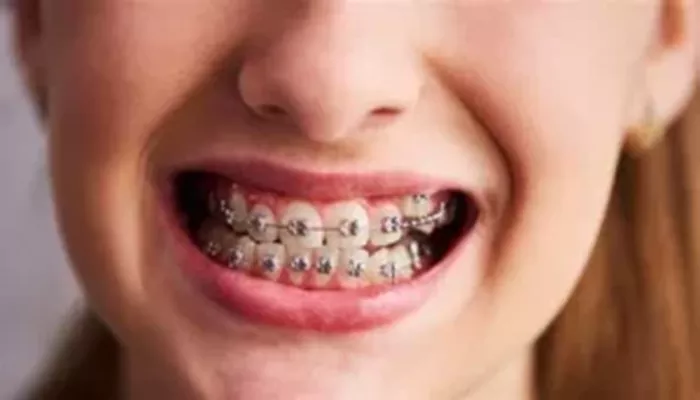Orthodontics, a branch of dentistry focused on correcting irregularities of the teeth and jaws, often involves the use of braces. These devices are designed to gradually shift teeth into their correct positions, leading to a more aligned and aesthetically pleasing smile. However, many individuals considering orthodontic treatment wonder if braces can also impact their jawline. This guide aims to provide a comprehensive understanding of how braces can affect the jawline, including the underlying mechanisms, potential changes, and considerations for different individuals.
Understanding the Jawline and Orthodontics
The jawline is a critical feature of facial aesthetics, influencing one’s overall appearance and self-confidence. It is composed of both the upper (maxilla) and lower (mandible) jawbones, which support the teeth and play a crucial role in chewing, speech, and breathing. Orthodontics primarily focuses on aligning the teeth, but the process can also involve adjusting the position and alignment of the jawbones.
How Braces Work
Braces consist of brackets attached to the teeth, connected by wires and sometimes elastic bands. The wires are periodically tightened or adjusted by an orthodontist to apply gentle pressure on the teeth, causing them to move gradually into their desired positions. This process can take several months to years, depending on the severity of the misalignment.
Mechanisms of Jawline Changes
Tooth Movement: As braces shift the teeth, they can also affect the underlying bone structure. Teeth that are moved closer together or into new positions can cause changes in the shape and contour of the jawline.
Bone Remodeling: The jawbones are living tissues that can adapt to changes in tooth position. When teeth are moved, the bone around them undergoes a process called remodeling, where new bone is formed and old bone is resorbed. This process can lead to subtle changes in the jawline.
Bite Correction: One of the primary goals of orthodontic treatment is to correct bites, such as overbites, underbites, and crossbites. By aligning the teeth and jaws properly, braces can improve the bite and, consequently, the jawline’s appearance.
Potential Changes in the Jawline
Improved Symmetry: Braces can help correct asymmetries in the jawline by aligning the teeth and jaws. This can result in a more balanced and symmetrical facial appearance.
Enhanced Definition: Proper alignment of the teeth and jaws can enhance the definition of the jawline, making it more prominent and sculpted.
Correction of Malocclusions: Severe malocclusions, such as severely crowded or spaced teeth, can distort the jawline. Braces can correct these issues, leading to a more harmonious facial appearance.
Factors Influencing Jawline Changes
Severity of Malocclusion: The degree of tooth misalignment and jaw irregularity will influence the extent of jawline changes. More severe cases may result in more noticeable changes.
Age: Younger patients, particularly children and adolescents, tend to have more plastic bones that can adapt more easily to orthodontic changes. Adults may experience less significant jawline changes due to the slower remodeling process in mature bones.
Compliance: Proper wear of braces and retention appliances is crucial for achieving optimal results. Non-compliance can lead to incomplete tooth movement and limited jawline changes.
Type of Orthodontic Treatment: Different types of braces and orthodontic appliances can produce varying degrees of jawline changes. For instance, surgical orthodontics, which involves jaw surgery in combination with braces, can result in more dramatic jawline transformations.
Considerations for Individual Patients
Goals of Treatment: While jawline changes may be a secondary benefit of orthodontic treatment, the primary goal is to correct tooth misalignment and improve oral health. Patients should prioritize these objectives when considering orthodontic treatment.
Consultation with an Orthodontist: A consultation with a qualified orthodontist is essential for understanding individual treatment needs and expectations. The orthodontist will assess the severity of malocclusion, jaw structure, and age to determine the most appropriate treatment plan.
Post-Treatment Care: After braces are removed, patients must wear retainers to maintain the new tooth positions. Compliance with retainer use is crucial to prevent relapse and maintain jawline improvements.
Conclusion
In conclusion, braces can indeed affect the jawline by correcting tooth misalignment and improving jaw alignment. While the extent of jawline changes varies depending on individual factors, many patients experience subtle improvements in facial aesthetics as a secondary benefit of orthodontic treatment. It is important to prioritize oral health and tooth alignment as the primary goals of orthodontic treatment, with jawline changes serving as an additional benefit. Consulting with a qualified orthodontist is essential for understanding individual treatment needs and expectations, ensuring optimal outcomes. By working with a skilled orthodontist and following their recommendations, patients can achieve a healthier, more aligned smile and potentially enhance their jawline’s appearance.
Related topics:

